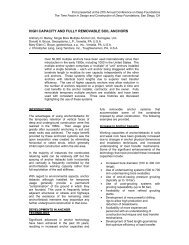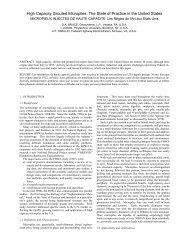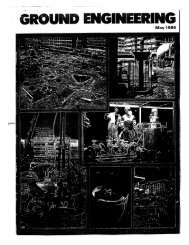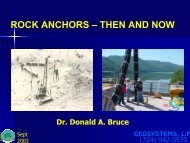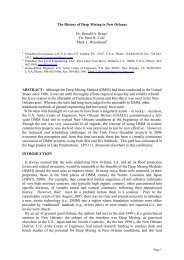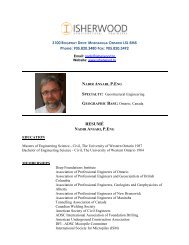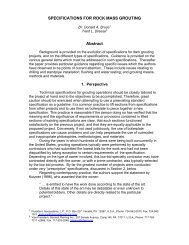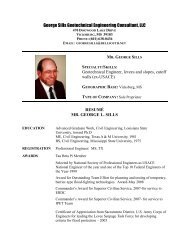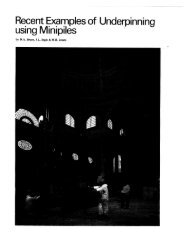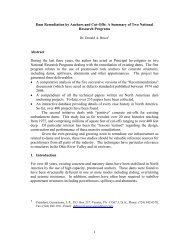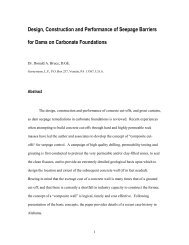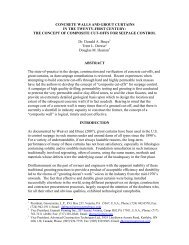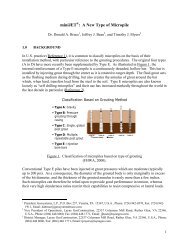SEEPAGE CUT-OFFS FOR LEVEES: A ... - Geosystems, L.P.
SEEPAGE CUT-OFFS FOR LEVEES: A ... - Geosystems, L.P.
SEEPAGE CUT-OFFS FOR LEVEES: A ... - Geosystems, L.P.
Create successful ePaper yourself
Turn your PDF publications into a flip-book with our unique Google optimized e-Paper software.
Soil Bentonite (SB)<br />
The definitive original paper remains that of D’Appolonia (1980), while the publication<br />
by Millet et al. (1992) provided an excellent update. He demonstrated how permeability<br />
of the backfill varies with the gradation of excavated soil and the bentonite content. In<br />
particular, the fines contents (and their plasticity) are critical and a minimum limit of<br />
20% is commonly set (including the bentonite content which may be up to 5%). The soil<br />
should be uniformly graded, to assure the desired permeability and minimal<br />
compressibility. However, it has not been found useful (Ryan and Day, 2003) to add<br />
gravel or coarse sand to a soil which does not naturally have this coarser fraction. Large<br />
particles (say > 4 inches) should be removed. A typical mix, suited for easy placement,<br />
will have a slump of 3-6 inches, and will provide permeabilities in the range of 10 -6 to<br />
5x10 -9 cm/s. Xanthakos (1979) provided typical backfill gradations used at the time<br />
(Table 1), while current thinking is to “soften” gradation limits with the exception that<br />
between 20 and 60% of fines must be used.<br />
Table 1. Typical gradation limits for backfills in the United States<br />
(Xanthakos, 1979).<br />
As with all “excavate and replace” methods, special care must be taken to ensure the<br />
bentonite slurry used to support the trench prior to backfilling has acceptable properties.<br />
These will include a Marsh Cone Viscosity of around 40 seconds, a specific gravity 0.25<br />
less than the backfill’s specific gravity, and a sand content as low as is practical, safe and<br />
economic to provide. (Typical values for a trench being dug in sand may be as high as<br />
30% without necessarily impacting the quality and homogeneity of the subsequent wall,<br />
provided proper attention is paid to the backfilling operation.)<br />
Soil-Cement-Bentonite (SCB)<br />
The addition of cement is warranted when a certain minimum strength is required for<br />
durability and resistance to erosion. To supplement the background of Xanthakos (1979),<br />
the reader is referred to the comprehensive paper by Dinnean and Sheskier (1997) on<br />
Twin Buttes Dam, TX. These authors noted that such mixes had been used in seepage<br />
cut-offs for the Sacramento levees, and at Sam Rayburn Dam, TX, although in general<br />
there had been “limited experience” to that point.



